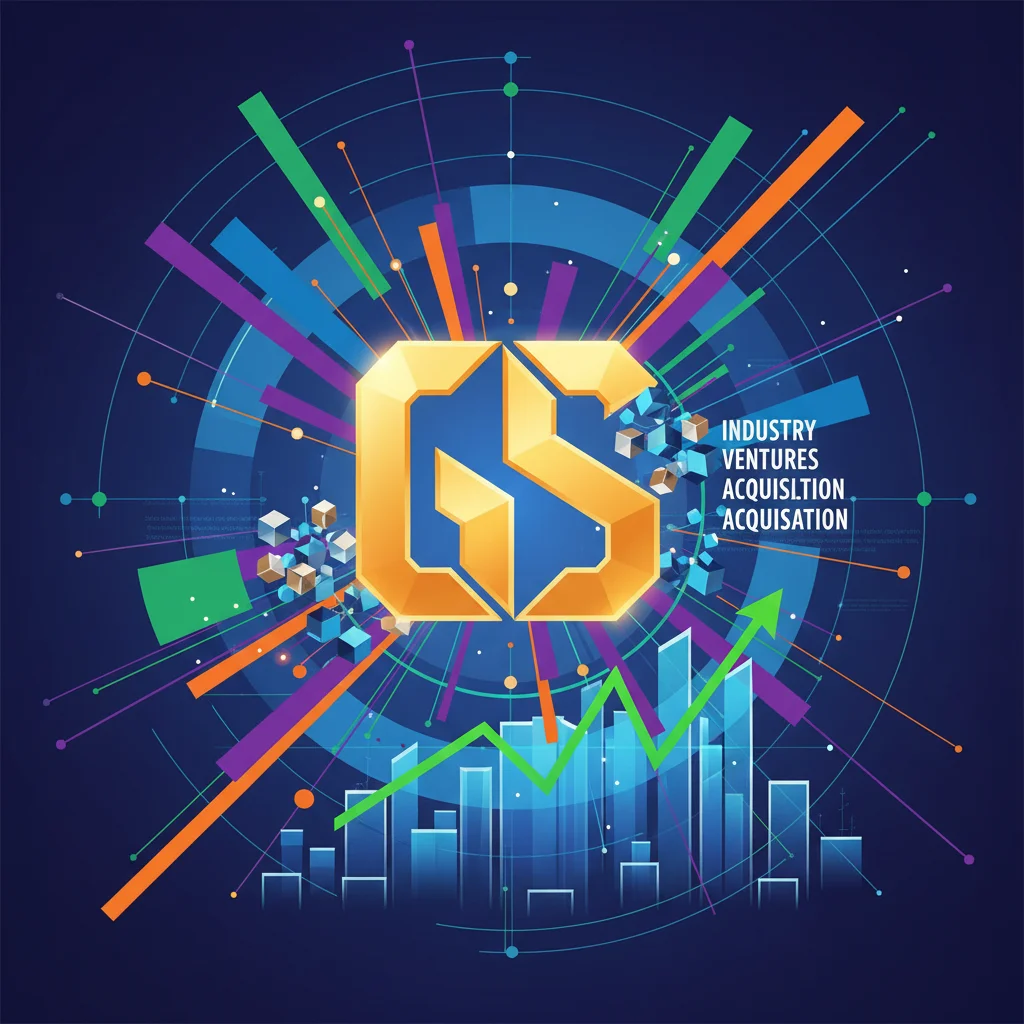
Goldman Sachs’s $1 Billion Power Play: Decoding the Industry Ventures Acquisition and the Future of Wall Street
In the ever-shifting landscape of global finance, the titans of Wall Street are constantly seeking an edge. In a move that reverberated through the investment world, Goldman Sachs announced its definitive agreement to acquire Industry Ventures, a leading venture capital investment group, for a sum reported to be around $1 billion. This isn’t just another line item on a quarterly report; it’s a profound strategic statement about the future of banking, investing, and the very structure of the modern economy.
This acquisition signals a deliberate and aggressive push by one of the world’s most influential financial institutions deeper into the lucrative, complex, and often opaque world of private markets and venture capital. But what does this deal truly signify? Why is Goldman Sachs spending a billion dollars to absorb a specialized firm like Industry Ventures? And what does it mean for investors, entrepreneurs, and the broader financial technology ecosystem?
In this deep dive, we’ll unpack the layers of this landmark transaction, exploring the strategic rationale, the market context, and the far-reaching implications for the future of finance.
The Players: A Tale of a Giant and a Specialist
To understand the significance of this deal, one must first understand the two firms at its center. They represent two different but increasingly convergent worlds of capital.
Goldman Sachs: The Wall Street Behemoth
Goldman Sachs needs little introduction. As a premier global investment banking, securities, and investment management firm, it has been a dominant force in finance for over 150 years. However, under the leadership of CEO David Solomon, the bank has been undergoing a strategic evolution. A key pillar of this strategy has been the expansion of its Asset & Wealth Management division, focusing on more stable, fee-based revenue streams to counterbalance the volatility of its traditional trading and investment banking businesses.
A crucial component of this expansion is the push into “alternative assets”—a category that includes private equity, private credit, real estate, infrastructure, and, critically, venture capital. These assets are typically less liquid than public stocks and bonds but offer the potential for higher returns. According to a report by Preqin, the global alternative assets market is projected to grow to $23.21 trillion by 2026, making it an essential battleground for firms like Goldman Sachs.
Industry Ventures: The Venture Capital Insiders
Industry Ventures, while not a household name like Goldman, is a powerhouse in its own niche. Founded in 2000, the San Francisco-based firm has carved out a unique position in the venture capital ecosystem. It operates primarily as a “fund of funds,” meaning it invests in other venture capital funds. This gives it broad exposure to a diverse portfolio of startups across various stages and sectors.
Crucially, Industry Ventures is a leader in the “secondary market.” This involves buying stakes in venture funds or directly in startups from existing investors (like founders, early employees, or other funds) who want to cash out before a company goes public or is acquired. This specialized expertise provides liquidity to a traditionally illiquid market and requires deep networks and sophisticated valuation skills—assets that are difficult to build organically.
Deconstructing the Deal: A Symphony of Strategy
A billion-dollar acquisition is never a simple transaction. It’s a calculated move based on market conditions, strategic imperatives, and a vision for the future. Let’s break down the core drivers behind Goldman’s decision.
The table below summarizes the key facets of the acquisition:
| Aspect of the Deal | Strategic Rationale & Implication |
|---|---|
| Acquisition Target | Industry Ventures, a specialized VC investment group with expertise in primary, secondary, and direct co-investments. |
| Reported Price | Approximately $1 billion (source). |
| Key Synergy | Instantly deepens Goldman’s access and capabilities in the private tech market, particularly in the complex VC secondary market. |
| Impact on Goldman’s Business | Significantly bolsters its Asset Management division, adding a mature platform and ~$7 billion in AUM to its alternatives portfolio. |
| Market Timing | Occurs during a period of correction in the tech sector, potentially allowing Goldman to acquire assets and expertise at a more favorable valuation. |
Why Now? Seizing Opportunity in a Volatile Market
The timing of this acquisition is particularly noteworthy. The global economy is navigating a complex period of high interest rates, inflationary pressures, and geopolitical uncertainty. The public stock market has been volatile, and the high-flying tech valuations of 2021 have come back down to earth. This “tech winter” has created a challenging environment for startups and venture capitalists but a ripe one for well-capitalized players.
With IPOs slowing and M&A activity more subdued, many early investors and employees in private companies are seeking liquidity. This dramatically increases the importance of the secondary market, Industry Ventures’ core strength. By acquiring them now, Goldman Sachs is positioning itself to be a dominant provider of that liquidity and to capitalize on opportunities to buy into promising companies at discounted valuations.
Buying, Not Building: The Expertise Imperative
Venture capital is a relationship-driven business. Success depends on networks built over decades, a deep understanding of emerging technologies like fintech and blockchain, and the credibility to gain access to the most competitive deals. For a massive institution like Goldman Sachs, building this kind of specialized platform from scratch would be a slow, expensive, and uncertain process.
The acquisition of Industry Ventures is a classic “buy, not build” strategy. Goldman is not just acquiring a portfolio of assets; it’s acquiring a seasoned team, an established brand, deep industry relationships, and two decades of specialized operational expertise. This instantly accelerates its ambitions in the venture space by years, if not a decade.
The Ripple Effect: What This Means for the Broader Economy
This deal doesn’t happen in a vacuum. It sends signals and creates waves that will be felt across the financial and technological landscapes.
Consolidation and the Rise of the “Financial Supermarket”
The asset management industry is in a state of perpetual consolidation. Scale is becoming increasingly important for competing globally, and large firms are looking to become “one-stop shops” for all of a client’s investment needs, from public market trading to illiquid private equity. This acquisition is a prime example of that trend. By integrating Industry Ventures, Goldman can now offer its high-net-worth and institutional clients seamless access to the venture capital asset class, a critical component of a diversified modern portfolio.
This trend has profound implications for the economics of investing, potentially driving down fees through scale but also reducing the number of independent players in the market.
Democratizing Private Markets?
Historically, investing in top-tier venture capital funds was the exclusive domain of institutional investors and the ultra-wealthy. As major players like Goldman Sachs expand their footprint, they are creating more structured products and funds that provide access to a wider (though still accredited) investor base. This deal will likely accelerate the “democratization” of private market investing, allowing more people to participate in the growth of the next generation of technology companies before they hit the public stock market.
This brings both opportunity and risk. While it offers access to potentially high-growth assets, it also exposes a new class of investors to the higher risks and illiquidity inherent in early-stage financial technology and other venture-backed sectors.
A Shot in the Arm for the Tech Ecosystem
For entrepreneurs and the broader tech industry, the entry of a behemoth like Goldman Sachs more formally into the VC space is a powerful signal. It represents a massive, stable source of capital that is committed to the sector for the long term. This can provide a stabilizing influence, especially during market downturns. With Goldman’s backing, Industry Ventures will have even more firepower to invest in funds and companies, providing essential fuel for innovation in everything from fintech to artificial intelligence and blockchain technology.
Conclusion: A Bold Bet on the Future of Value Creation
The acquisition of Industry Ventures by Goldman Sachs is far more than a simple financial transaction. It is a strategic masterstroke that reflects several powerful, converging trends: the institutionalization of venture capital, the relentless growth of alternative assets, the consolidation of the asset management industry, and the blurring lines between traditional banking and cutting-edge technology investing.
Goldman Sachs is placing a billion-dollar bet that the future of value creation will be increasingly found in private, innovative companies long before they become public entities. By acquiring a specialist with deep roots and a proven track record, the firm has secured a powerful platform to capitalize on this trend for decades to come. For anyone involved in finance, technology, or the broader economy, this is a development to watch closely. It’s a move that doesn’t just change the org chart at two firms; it helps redraw the map of modern investing.


